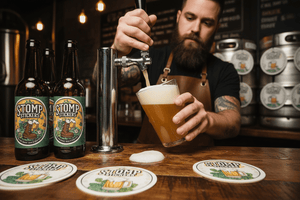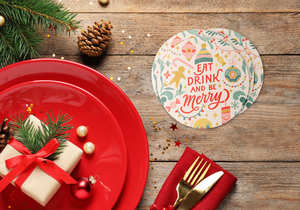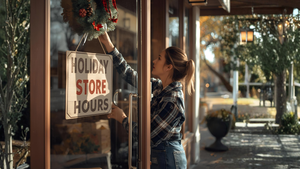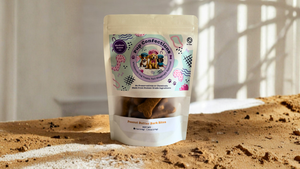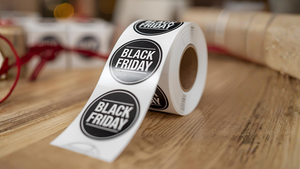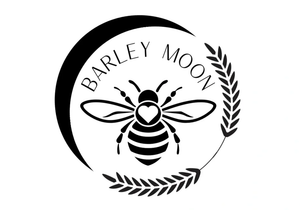5 Best Practices to Consider When Designing Your Custom Canopy Tent

Canopy tents are the perfect way for your business to stand out at any festival, trade show, or event. They're fun, eye-catching, and a killer advertising tool. But if you’ve never designed a canopy tent, there are a number of things to think about - the size of the tent, the colors you’ll use, font types, legibility, and so much more.
To help you create the perfect canopy tent, we’ve outlined five best practices to consider when starting your design. Let’s go!
Why Use Custom Canopy Tents?
Before we get into our design best practices, we have to ask ourselves why we need a canopy tent. The easy answer is outdoor events are unpredictable. It might rain, it might snow, or you might be stuck in the blistering sun all day—suffice to say, you need protection. While that’s the practical side of canopy tents, the value actually goes much further.
A custom canopy tent turns your booth or festival space into a recognizable storefront visible from a distance. When branded with your logo, colors, and messaging, your tent transforms what would be a nondescript patch of ground into a unique environment. It’s a destination and hub for your staff and customers to rally around and makes your brand visible to attendees.
Best of all, canopy tents are incredibly versatile! They can be used at festivals, fairs, concerts, trade shows, conferences, sponsored events, or even your company picnic. Designed well, a custom canopy tent lets you wordlessly make your mark or provide a shady oasis at your next event.
5 Best Practices for Designing a Custom Canopy Tent
When it comes to designing your canopy tent you want it just right. And you should. After all, your tent is often the first thing people see when they encounter your business.
The good news is designing your tent doesn’t have to be difficult. You just need to keep a few best practices in mind:
1. Choose Your Frame Wisely
No matter what your canopy tent will be used for, make sure it’s easy to put up, break down, and store. The frame should be lightweight and fold down to a manageable size for one or two people to transport and assemble.
On that end, pop-up canopy tents are Stomp’s tent of choice -- they are light, user-friendly, and fold down into one piece when you’re not using them. They are also durable, perfect for travel, and super easy to use.

As for the frame material, powder-coated steel frames are the standard frame option for a 10’ x 10’ tent at Stomp. You can choose a premium hexagon anodized aluminum frame that offers more durability. Both are lightweight, easy to carry, and most importantly, strong. If you move up to a larger tent size, like 10’ x 15’ or 10’ x 20’, the premium hexagon frame is the only choice.
2. Make Sure Your Logo is Legible
If you’ve ever been to the beach, you’ve likely seen the planes flying along the coast advertising a local restaurant, club, or event. What those planes do well is capture your attention, get the message across (Buy 1, Get 1 anybody?), and leave you with a visual imprint of the brand’s logo.
Just like with a plane, as people are seeing your tent from across the field, parking lot, or conference hall, you want them to see your logo and immediately get a sense of who you are and what your message is. That means ensuring your logo is big enough and stands out on the tent.

One factor to consider is the artwork itself. Remember that preparing artwork for large-scale printing, such as what you’d see on a custom canopy tent, is different than your typical graphic design job. Ensure your logo and any other printable assets are editable vectors. Vector artwork is scalable to any size, so the result will be as sharp and readable as you want it to be.
There’s also an area near the bottom of the peak and top of the valance that is slightly concave and may be out of a viewer’s line of vision. Use the provided template with the caution zone displayed to ensure important graphics, logos, or words print within the prime viewing areas.
3. Consider Your Color Choices
You’ve likely spent a good deal of time and money on your branding and marketing, so don’t cut corners when it comes to your canopy tent. Choose a color scheme for your tent design that complements your brand and allows your artwork to stand out.
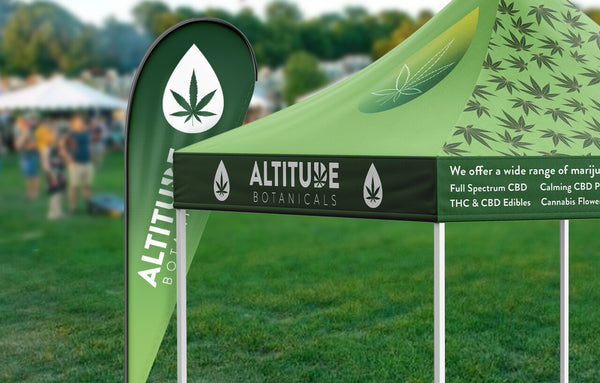
Go bold—and don’t be afraid to think psychologically. Colors are proven to evoke emotional responses, and the right color or color combination might actually attract more traffic to your booth. Think about the emotion you want to convey. Yellow, for example, is known to be the “happiest” of all colors, purple is sophisticated, blue is sincere, and red is provocative.
Also, consider what your competitors are doing. For example, if you know the majority of your competitors have a red tent, then maybe you should choose black.
Whatever you choose, be sure your print, logos, and artwork pop against it.
4. Use Easy-to-Read Fonts
Web fonts are the best choice for large-scale printing. Fancy fonts, even if you use them in your branding, tend to be challenging to read at a distance. On a canopy tent, subtleties might be lost if you try to focus on too much detail. So go bold, go simple, and try to be as clear and purposeful as you can be.
Here’s an example that’s a bit of a conundrum.

On the one hand, the tent is making a bold statement on the inside with the yellow, but the artwork on the roof and exterior melts into the background. If you aren’t standing right in front of it, you probably wouldn’t know what it was all about. Changing the subtle logo on the canopy top peak to a bright yellow on the brown background would be a better way to attract attention and reinforce the logo in a viewer’s mind.
Similar to what we discussed about making your logo legible, your fonts must make a statement, get the point across, and attract people to your tent.
5. Quality Fabric
A custom printed canopy tent is an investment. Choosing quality fabrics will help you maximize that investment and ensure your tent lasts as long as possible.
While high-quality tent fabric can be a bit pricier, it will save you money in the long run as the colors and design will continue to perform for years.
If you know you’ll be outside, opt for a fabric that blocks UV rays and is fade and water-resistant. Professional-grade 600D polyester is the best choice as it is in fact waterproof, fade-proof, flame retardant, and extremely durable.
Design the Perfect Custom Canopy Tent with Stomp
Designing a custom canopy tent with Stomp is easy. Our templates and online design tools walk you through the process of creating a high-quality canopy tent that will truly go the distance. If you need help, ideas, or support, our team is always here.
- Marketing Team

